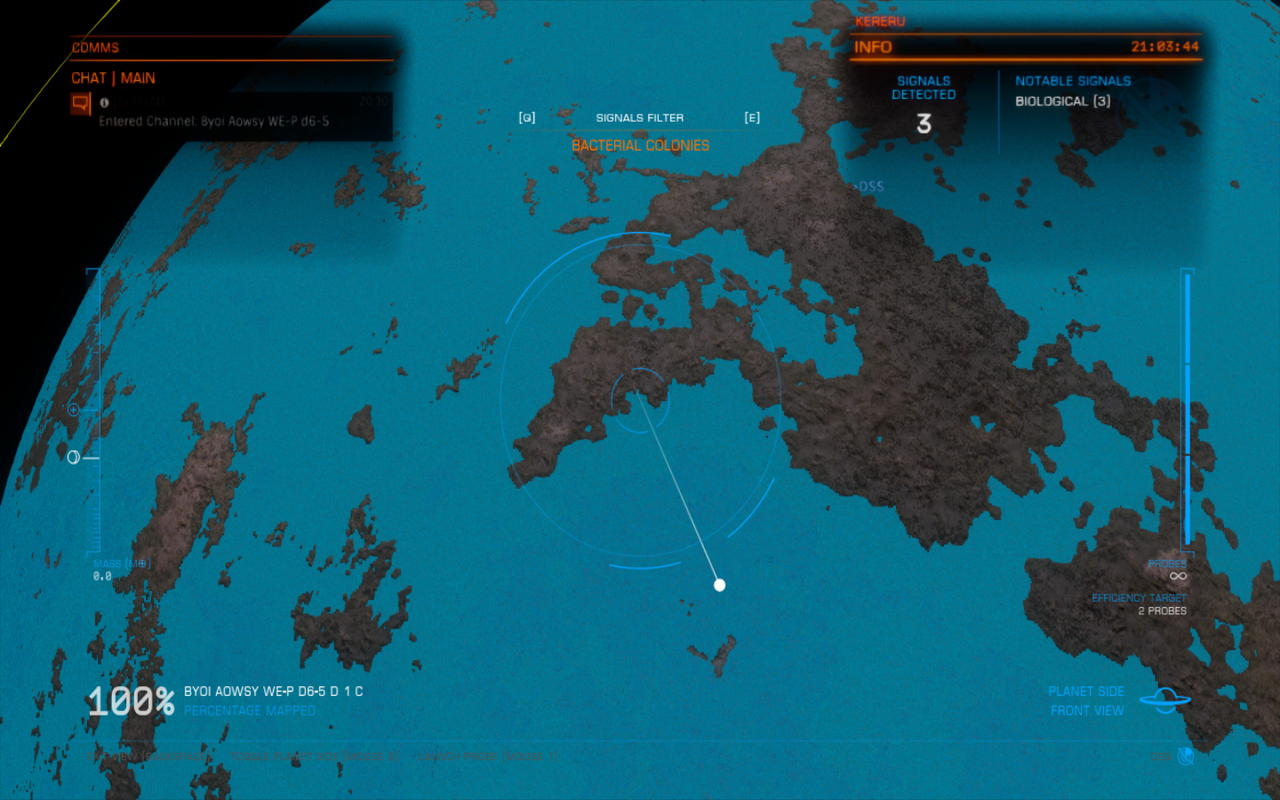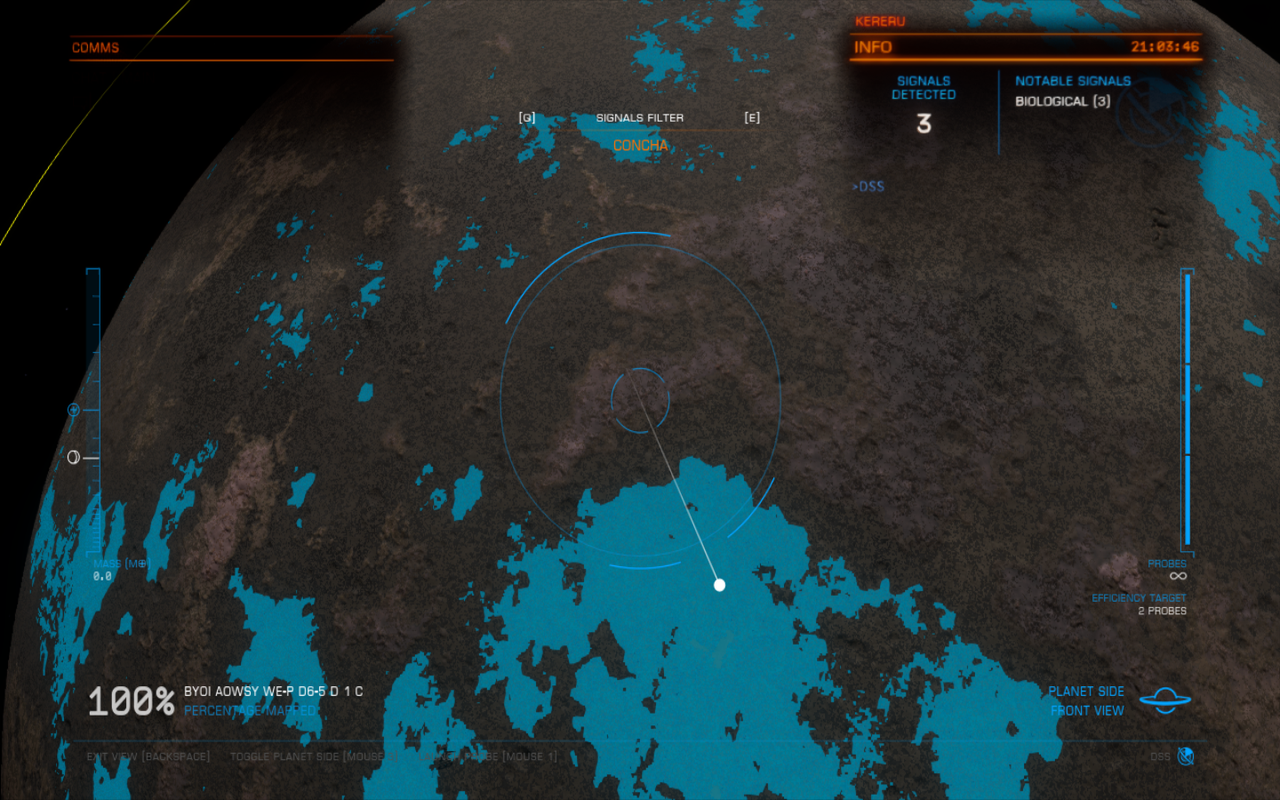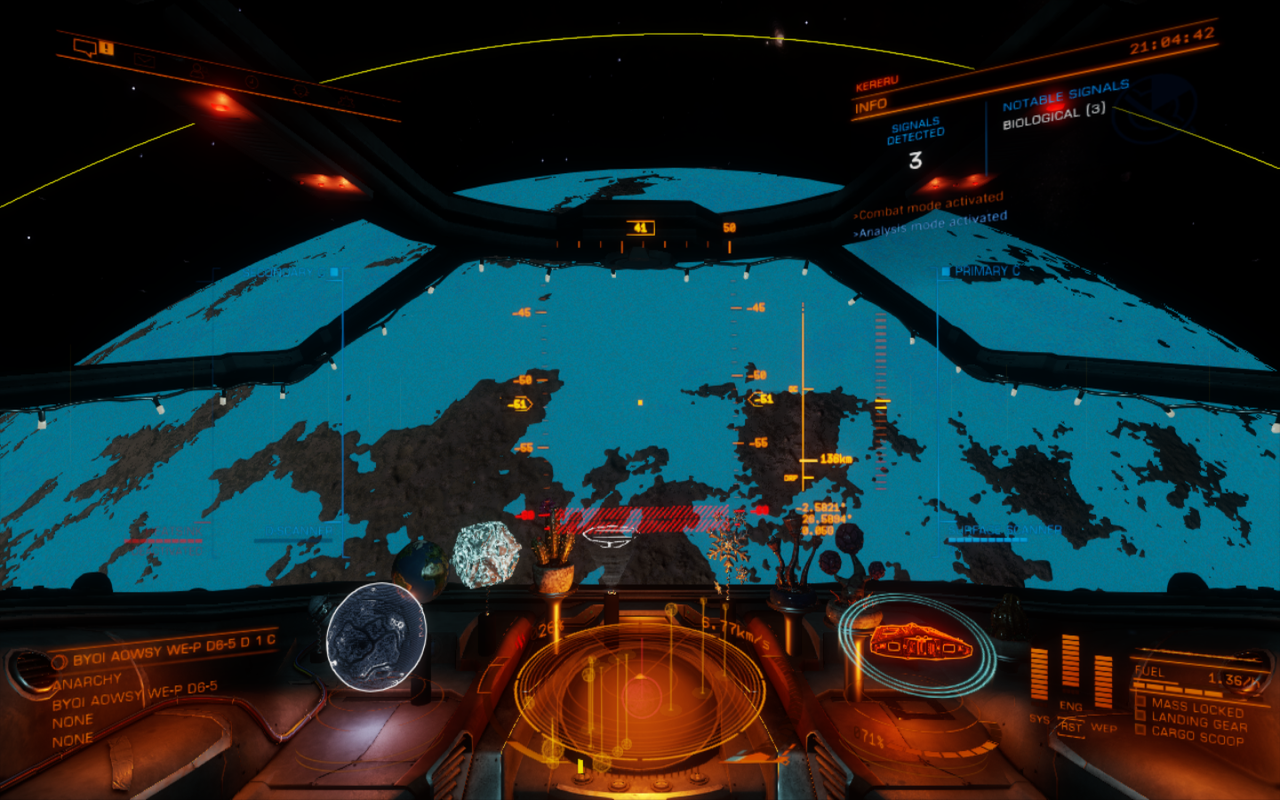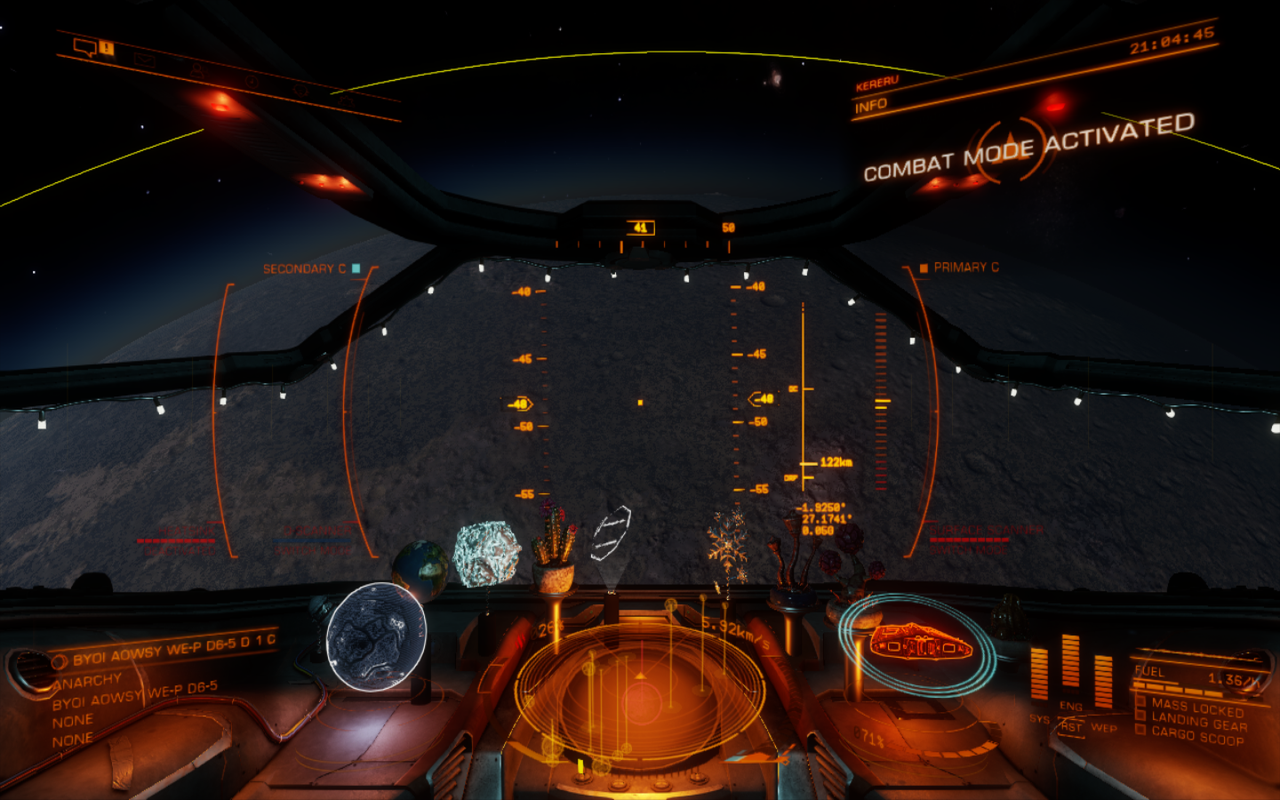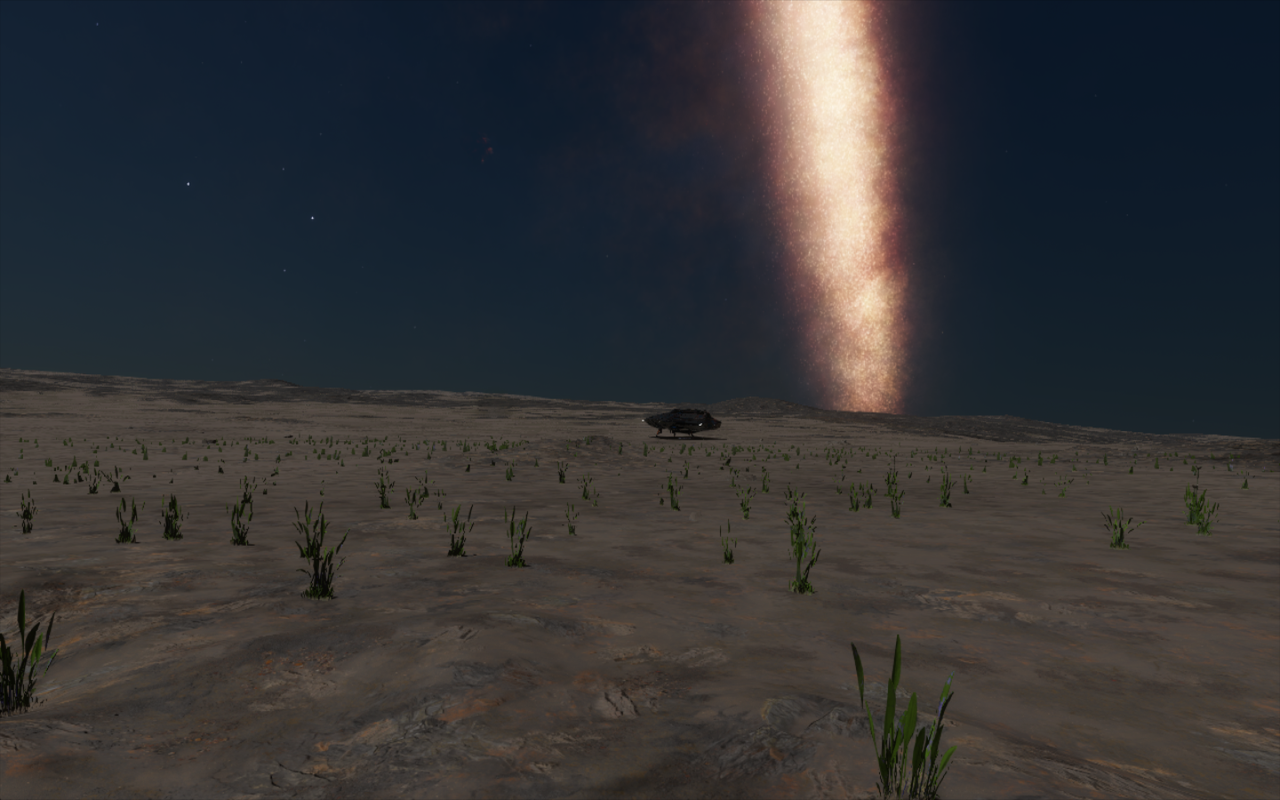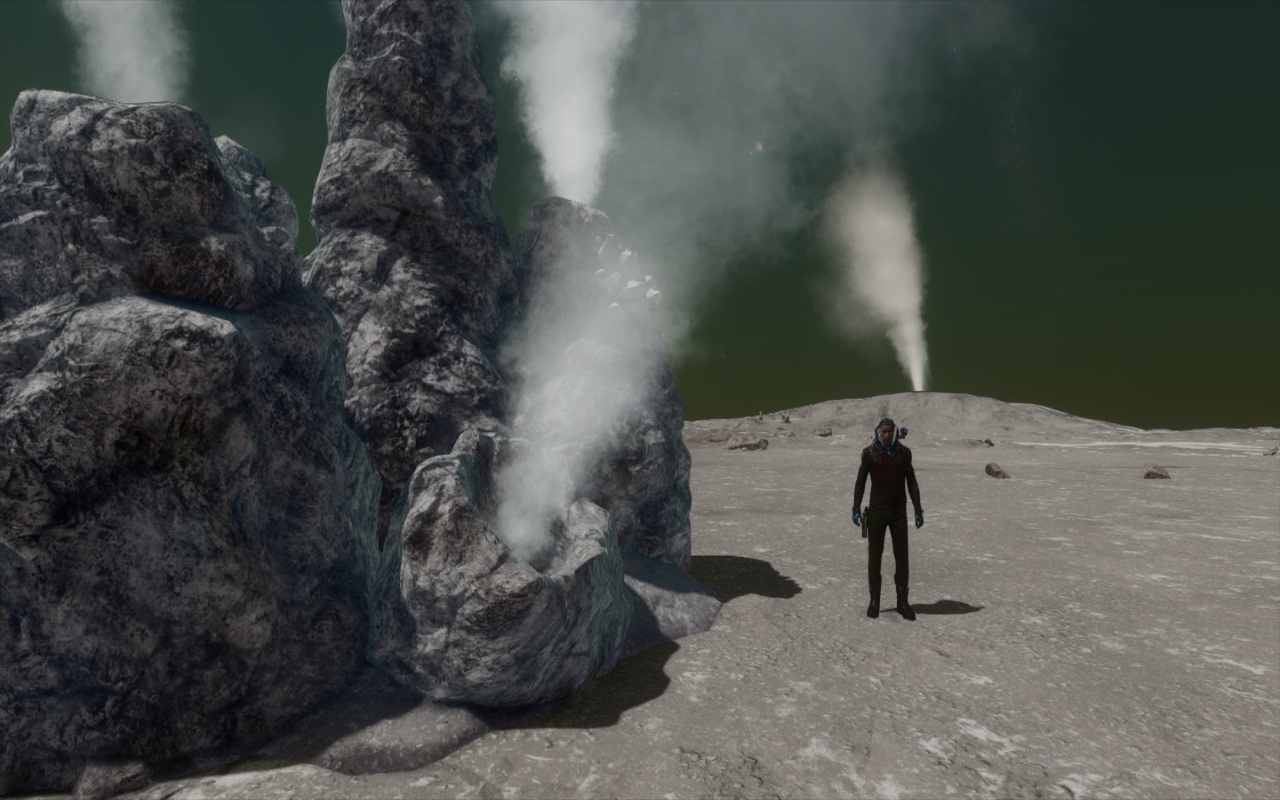How does that work? When I use secondary mode a green pulse goes out, that slightly highlights things like rocks.
What do bacteria patches look like with that? Color change?
Bacteria patches will look like a persistent green patch on the floor after the pulse, and then when the pulse fades they tend to look like someone has drawn a maze in the rock. They're pretty subtle, patches can be tiny and separated by multiple kilometres, and I can rarely be bothered to look for them (I'll composition scan them for the Codex if I see them, but usually that's all) - it's easier to start with some of the more solid plants. To be honest, the pulse mode is basically useless right now except for telling if you're far enough away to get a second/third sample.
For finding plants, what I tend to do is:
- DSS the planet, switch the DSS filter through the plants modes, see which region has the most plant types on it (in daytime) and glide down to there.
- drop to about 30m up, deploy landing gear, then fly at about 100m/s upside down looking for anything which doesn't look like general terrain or a rock (with the planet colours fairly desaturated right now, most life stands out). If you're not close enough to see the rock scatter, you'll probably also miss the plants ... if you're travelling too fast, you'll probably have flown over by the time it renders.
- set your fire groups to analysis + composition scanner just on the off-chance, if that pings great but it probably won't
- if I see anything, land, get out the SRV, then get out of the SRV in the Artemis to scan it. Then get back in the SRV to drive around looking for two other clumps - other than bacteria, they'll generally be fairly nearby but not so close I'd just walk to them (and if they are that close, they'll be in "undiverse" range). If I'm lucky, there'll be two or three types of life just in this general area so I can spend a while driving around picking them up.
- if I don't see anything for a while, assume that while the general
biome is suitable for this type of life, the specific terrain here isn't, return to orbital cruise and try to drop down somewhere else with different terrain.





